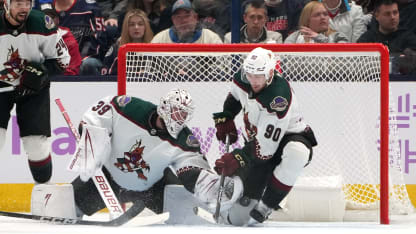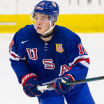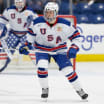The Arizona Coyotes have had that killer instinct lately.
Penalty-killer instinct, that is.
Arizona’s PK has rocketed up the charts recently, having killed 16 straight penalties over five games. (That number increases to 18 when considering the Coyotes killed their final two penalties against the Dallas Stars on Nov. 14, though they allowed a power-play goal in that game). The Coyotes' stellar play while shorthanded has rocketed its penalty kill to 13th in the league with an 80.82 percent kill rate, shutting down some of the league’s best power plays along the way.
Arizona's penalty kill ranked 25th in the NHL just 19 days ago, on Nov. 8.
“We haven’t changed anything, but the players are more urgent, more used to it, and they take a lot of pride in it,” head coach André Tourigny said. “I see a lot of urgency. There's a lot of ownership. Our guys who play PK right now, we’ve shortened our bench, and those guys take extreme ownership.”
Alex Kerfoot leads the team with 62:31 of shorthanded time on ice this season, followed by Matt Dumba (61:41), Nick Bjugstad (49:09), J.J. Moser (48:11), and Troy Stecher (44:08). One of the things that’s been very noticeable during this stretch is the sheer amount of blocked shots, and Moser (33), Dumba (24), and Stecher (23) each rank in the top five on the team.






















